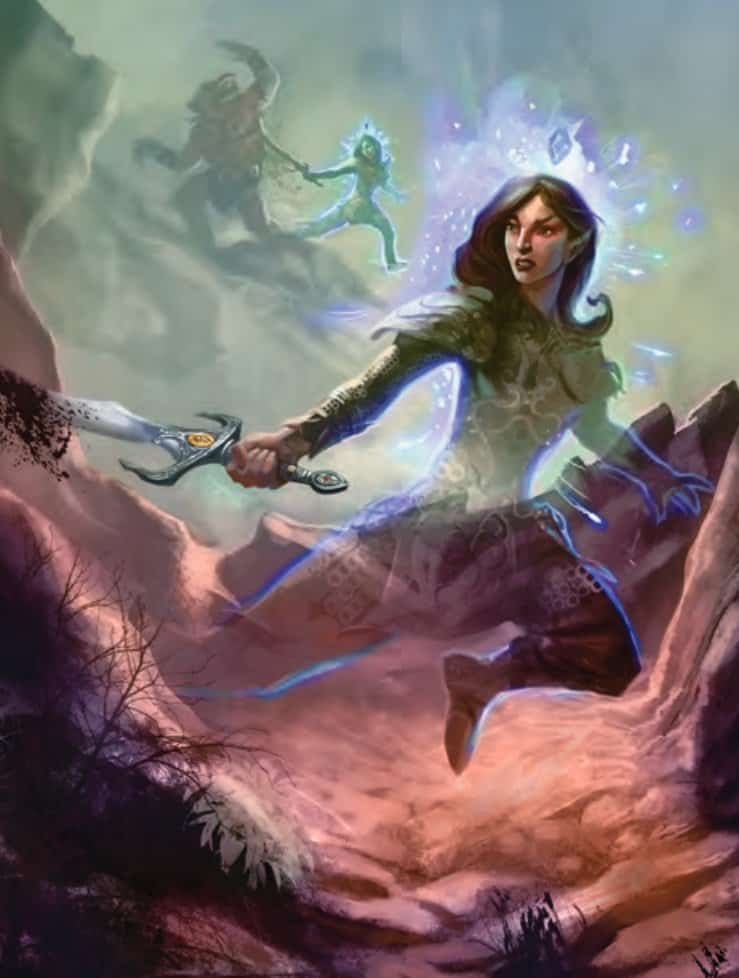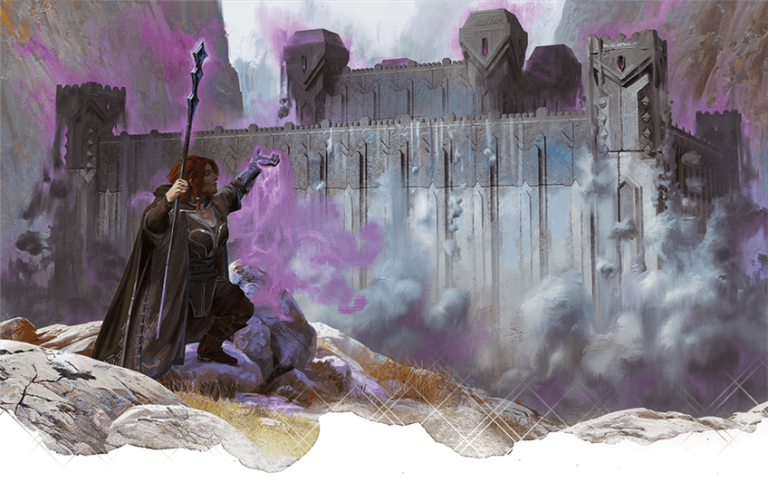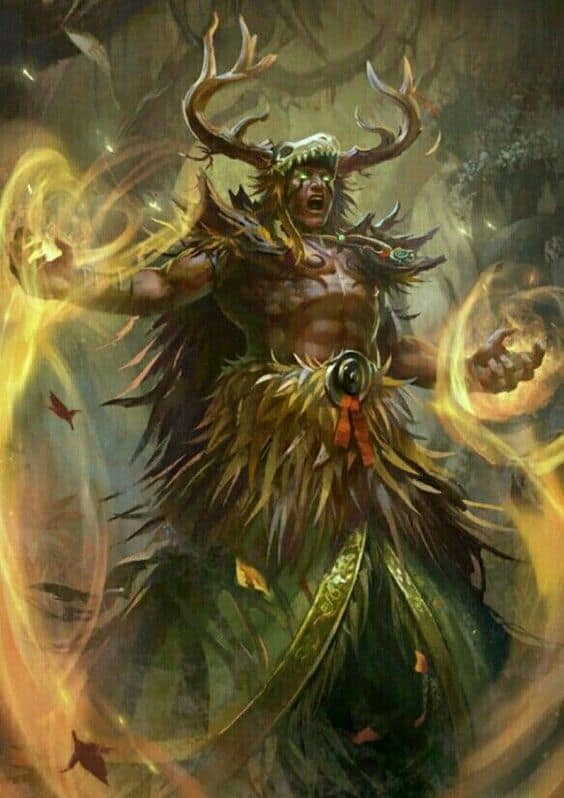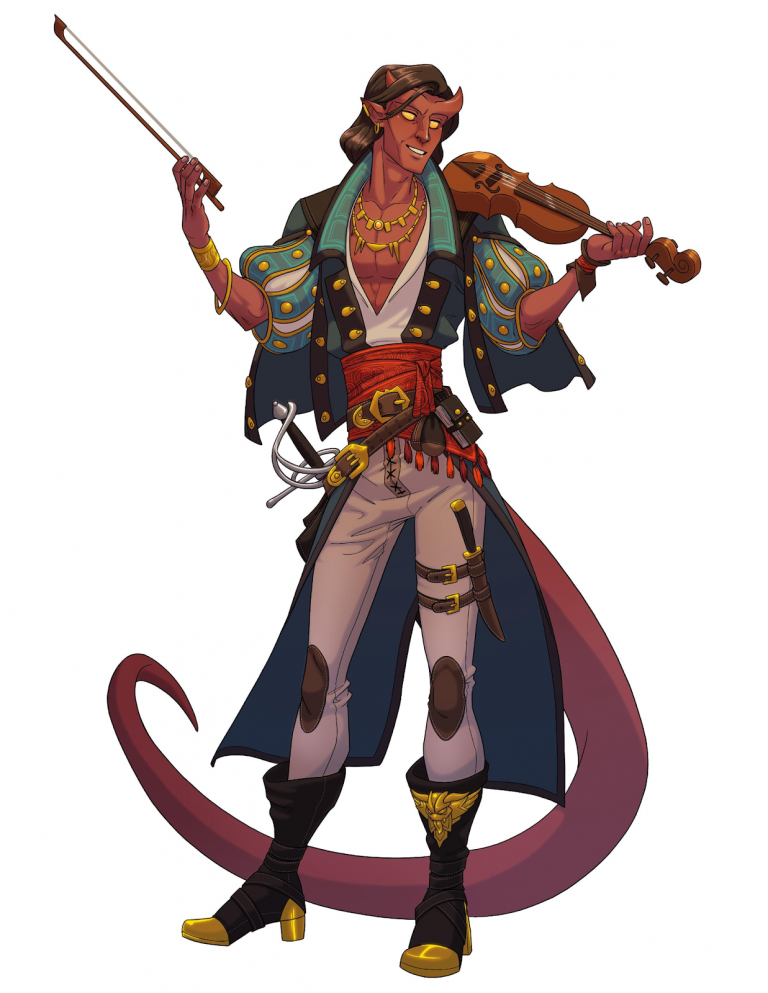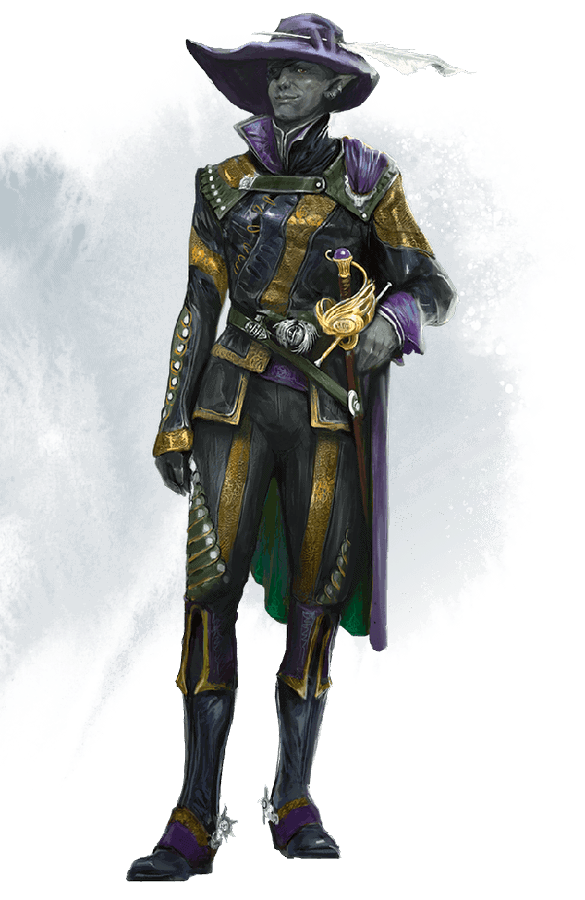D&D 5e: College of Swords Bard Guide
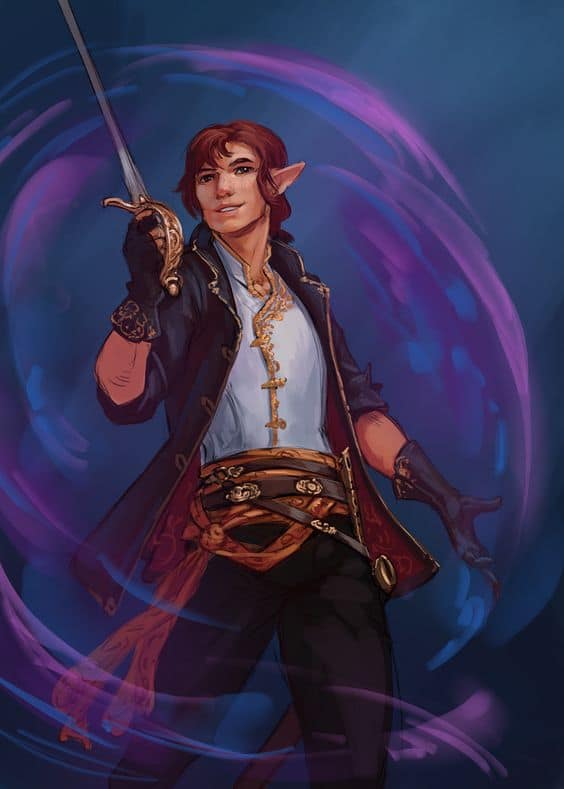
D&D 5e: College of Swords Bard Guide
Role in the Party
Most Bards focus on cutting you down with harsh words and whimsical magic. The College of Swords is a little more direct and to the point, laying foes low with swordwork and spells.
Equally comfortable buffing the party as they are leaping into combat, or blocking an orc’s axe as they are dealing with the (arguably more dangerous) intricacies of a royal court. The College of Swords Bard, sometimes called Blades, is a flexible, versatile subclass capable of dealing decent damage in combat, enabling their allies, or debuffing their enemies.
Epic
Good
Meh
Bad
The College of Swords Bard subclass is found in Xanathar’s Guide to Everything. Click here to pick up your own copy of Xanathar’s Guide to Everything!
College of Swords Features
Bonus Proficiencies: At level 3, when they take the subclass, the Swords Bard gains proficiency in Medium Armor and Scimitars. This is added to the Bard’s existing list of proficiencies, meaning they can use most one-handed weapons and a small smattering of ranged options.
Looking at the list from the perspective of a frontline character, this seems a little lacking. Medium Armor and a d8 hit die don’t add up to much toughness, and a Swords Bard who intends on going toe to toe with big monsters will have to look for other ways to get tougher.
Thankfully, some of the other abilities on offer shore up this weakness, but if the Swords Bard starts to run low on resources, they’re surprisingly squishy.
As a bonus, if a Bard is proficient in a weapon, they can use it as a spellcasting focus. This sounds minor, but it’s an incredibly useful ability that means a Blade can dual wield and still cast without issue.
Fighting Style: Also at 3, the Bard gets to choose between two fighting styles, which dictate how they choose to take part in combat.
Dueling: Attacking while holding a single one-handed weapon means attacks deal +2 damage. (Pay particular attention to how this doesn’t mention not holding a shield.)
Two-weapon fighting: When holding two one-handed weapons, your second weapon also deals damage based on your ability modifier, instead of just using the weapon’s dice.
Of the two fighting styles, dueling is normally the better option (even if two weapons are cooler!) The math shows that both fighting styles are roughly equivalent in DPS, but having two weapons comes with issues like not being able to use your off-hand, spending resources on multiple attacks instead of a few big ones, and needing two magic weapons to stay relevant when they become commonplace.
Blade Flourish: Finally, also at level 3, the Swords Bard gains Blade Flourishes. These are the key ability of the class, the resource that uses their Inspiration, and the thing that makes them so effective in combat.
Whenever a Swords Bard takes the attack action, their movement speed increases by 10 feet until the end of the turn. If any of their attacks hit, the Bard can also use one Blade Flourish, which costs one use of Bardic Inspiration.
The Swords Bard knows three flourishes, which all deal extra damage to the target equivalent to the Inspiration dice roll, and each also has a bonus effect:
Slashing Flourish: The bonus damage can also be applied to one other creature of your choice within 5ft.
This isn’t good. The damage is too low to be worth burning the dice, and the Swords Bard doesn’t want to be putting itself in a position next to multiple enemies.
Mobile Flourish: Push the target 5ft, plus the number on the Inspiration die, plus spend a reaction to move to any space within 5ft of the target.
This is situational, but no save makes this incredibly relevant when those situations arise. Automatically slamming a monster of any size out of the threat range of the vulnerable casters so they can relocate is invaluable.
(So what if the Ancient Red Dragon has 30 STR? Psh, I have a knife! Back, beast!)
Defensive Flourish: In addition to dealing bonus damage, the College of Swords adds the number rolled on their Inspiration die to their AC until the start of your next turn.
This ability. It can give a measly 1 AC, or a colossal +6. At level 3. This scales to a maximum of +12 at level 15, which is the single biggest raw AC buff in the entire game.
The ability can stack with other buffs (Shield of Faith, or simply Shield spring to mind) and good rolls can make a Swords Bard an impregnable fortress against things that require an attack roll.
Extra Attack: From level 6, the Swords Bard can attack twice when they take the attack action.
The standard martial class attacking buff. Green because it comes a level later, but this is still a 100% DPS buff that’s going to be used turn after turn.
Master’s Flourish: The final ability of the subclass, Master’s Flourish is simple but powerful.
Instead of spending Inspiration on any of the Blade Flourish options, the Sword Bard can roll a d6.
This means that Blade Flourish is available every single turn, without restriction. It essentially translates to +d6 to damage and AC, every single turn, with the other effects and larger dice available for emergencies.
Strengths
Bards are widely regarded as one of the stronger classes in D&D 5e, and the College of Swords is no exception to that.
Their class abilities lend themselves to a fast, aggressive playstyle, going in and fighting toe to toe alongside the Barbarians and Monks. With a dash of panache and a number of abilities that can keep them in the fight and dealing damage, a Swords Bard can be a versatile, useful melee combatant.
But they’re also still a full caster, with everything that entails. Most encounters will open with the judicious use of spellcasting, whether that’s a buff to the party, or disabling a key enemy. An understanding of the ebb and flow of combat, as well as what the party and their enemies can do, is vital for getting the most out of the class.
The Bard is also a class that thrives outside of combat. Social encounters and skill challenges are the bread and butter of any good bard. While the College of Swords doesn’t offer any specific bonuses specific here except flavor, the Bardic base kit is loaded down with skills, Expertise, and abilities that key on short rests.
What this comes down to is a character that’s always useful, with one qualification. If you roll up this subclass, don’t expect to beat other classes at their own game, but know that no matter what happens, the Swords Bard will be able to offer something, and that’s a statement not a lot of classes can make.
Weaknesses
The College of Swords has two main weaknesses. One, it doesn’t specialize in anything, and the things that it is particularly good at can take a while to come online. The first big breakpoint is level 6. At this point, the character has Extra Attack, and Inspiration comes back on every short rest, which means that the character is free to use Blade Flourish, ie, their key ability, a lot more often.
The second problem is sustainability. Blades are very resource reliant. When spell slots are empty and Inspiration runs dry, the character just has unbuffed one-handed weapons, medium armor and a d8 hit die to fall back on, and they don’t go far.
This becomes far less of an issue as the character levels up, but Swords Bards might feel like their early levels aren’t playing into the fantasy of the swashbuckling character they rolled up.
Best Race Options
Metallic Dragonborn: A choice of stats and a damage resistance are good starts for any warrior type class. The real boost here is breath weapons, an AOE burst of damage that scales in charges and replaces one of your attacks, and a single use debuff that can demolish whole encounters used correctly.
Triton: Decent stats, a whole mess of watery abilities, darkvision, spell casting. The Triton is a great race for melee bards, especially in campaigns that are going to take place at least in part near the ocean.
Lightfoot Halfling: Small size is no downside to a Swords Bard’s melee prowess, and everything they offer is great for the subclass.
Lucky, Brave, great stats, and the ability to hide are all amazing abilities, especially for a character who wants to be sneaky.
Choosing the Right Skills
Bards are in the enviable position that they can be good at any skill if they choose to specialize in it. A Bard can choose any 3 skills in the game, as well as gain two or more from the background and racial choices. At levels 3 and 10, the Bard also gains the Expertise ability, doubling their proficiency in two skills each time.
At the very least, pick up Persuasion and Perception, both of which are near essential skills that will be used over and over again. Athletics might also be worthwhile, especially if you want to try grappling, climbing, or acrobatic leaps.
Stealth is also a good pick up, especially if the rest of the party are the sneaking type. Round out the build with one or two knowledge skills.
Fitting Feats
Inspiring Leader: Swords Bards want to lead from the front, but lack a little of the toughness required to do that. Throwing on a bunch of temp HP every morning for free, for you and the entire party, is a quick fix.
As a bonus, you can refresh the HP after a short rest, which as a Bard, you want to take anyway. Tell more overly-exaggerated stories and walk off sword stabs. Everything’s a win.
Mobile: If your party is heavy on front line characters, a Swords Bard can easily choose to be the most maneuverable person on the battlefield.
Mobile and Blade Flourishes stack to give the Swords Bard a base speed of 50ft whenever it makes an attack and the second benefit of the feat fosters a fighting style that’s all about darting in, hitting, then dancing back out again.
War Caster: This subclass might take more hits than most, so making sure that concentration stays up on your key spells is important. Advantage helps with that immensely.
You can increase the rating to Purple if you find a way to grab one of the combat cantrips. Booming Blade is a fantastic spell for a Swords Bard, especially when you can counterattack with it.
Optimal Backgrounds
Criminal: Two great skills for a Bard focused on subterfuge, and the tool proficiencies to back it up, including the all-important Thieves Tools.
Courtier: Insight and Persuasion are perfect skills for social encounters, and two languages turn the character into an international man of mystery, acting as an emissary and go-between, perfect for a Face.
Sailor: Buckle your swashes, you’re the best pirate they’ve ever seen. Athletics and Perception are the most used physical skills, water vessels and navigator’s tools are going to be incredible in the right campaign.
Multiclassing Options
Battlemaster Fighter: If there was a class that demanded a multiclass into Battlemaster, it’s a Swords Bard. The Subclass already gives the character a whole bunch of utility and damage abilities tied to their attacks. Taking 3 levels in Fighter gives the character even more of this.
With Combat Maneuvers and Blade Flourishes, a Bard/Fighter can have 7 different combat options, all of which refresh on a short rest. That’s a massive list of potential boosts and debuffs, on top of the spells and skills the Bard already gets.
Add another fighting style, which is always useful, and Action Surge for the ability to cast a spell and take an attack action in a turn, and you’ve got a melee beast.
When building this, it’s recommended to take no more than 3 Fighter levels, otherwise, it will start to impact spell progression.
Hexblade Warlock: Some might argue the Hexblade is a little too strong (it probably isn’t, but the class is incredibly front loaded with abilities.) What you need to know is that splashing a level or two of Warlock is the perfect compliment to the College of Sword’s swordsmanship.
Why? Because a one level dip makes the character wholly single stat reliant. A HexBard does literally everything with their Charisma stat. Suddenly, in addition to casting spells, as long as the Hexbard is using their chosen one-handed weapon, their to-hit rolls and damage rolls also key off of CHA.
Add a useful spell list, including the almighty Eldritch Blast cantrip, as well as some utility benefits, and everything falls into place. A one level dip is enough, but you could also push two for access to invocations and another regenerating spell slot.
Paladin: The stat requirements can be a pain unless you go STR instead of DEX, but a dip into Paladin offers a massive amount to the Swords Bard. Realistically, you’re going to want 2 or 3 levels, taken after Bard 6 to get Extra Attack first.
The first advantage is proficiency in Shields and a Fighting Style. Taking the Defense style here effectively gives the character a flat +3 to AC at all times, which is a significant buff and can make a Sword Paladin very tanky, especially when you also take Blade Flourish into account.
Second is Smite, a colossal damage burst that can be tactically deployed when needed, and fueled with the Bard’s greater number of spell slots. Paladins also get a small amount of free healing and a few other things that will benefit the party.
Finally, taking a third level in Paladin unlocks an Oath. We’d lean towards Oath of Conquest, because it offers a defensive spell in Armor of Agathys (scaling THP and damage,) an AOE fear, or guaranteeing that a hit lands with a +10 spike to one attack roll.
Would I recommend playing a College of Swords Bard?
The College of Swords is the ultimate generalist and all the better for it.
Is it as good in combat as a class that does nothing except swing a sword? No. Is it as tough as a Barbarian, as fast and sneaky as a Rogue, or as magically adept as a Wizard? Again, no.
But are any of those characters as comfortable in the sheer range of situations a Swords Bard can flourish in? Again, no. While they might not excel at any one thing, built well, these sword swinging minstrels can handle almost anything.
That’s the draw, here. No matter the situation, no matter what the next encounter is, whether it’s fighting through a dungeon, escaping the City Watch, or seducing a 1000 year old Lich, the College of Swords has an answer and does it all with style and panache.



